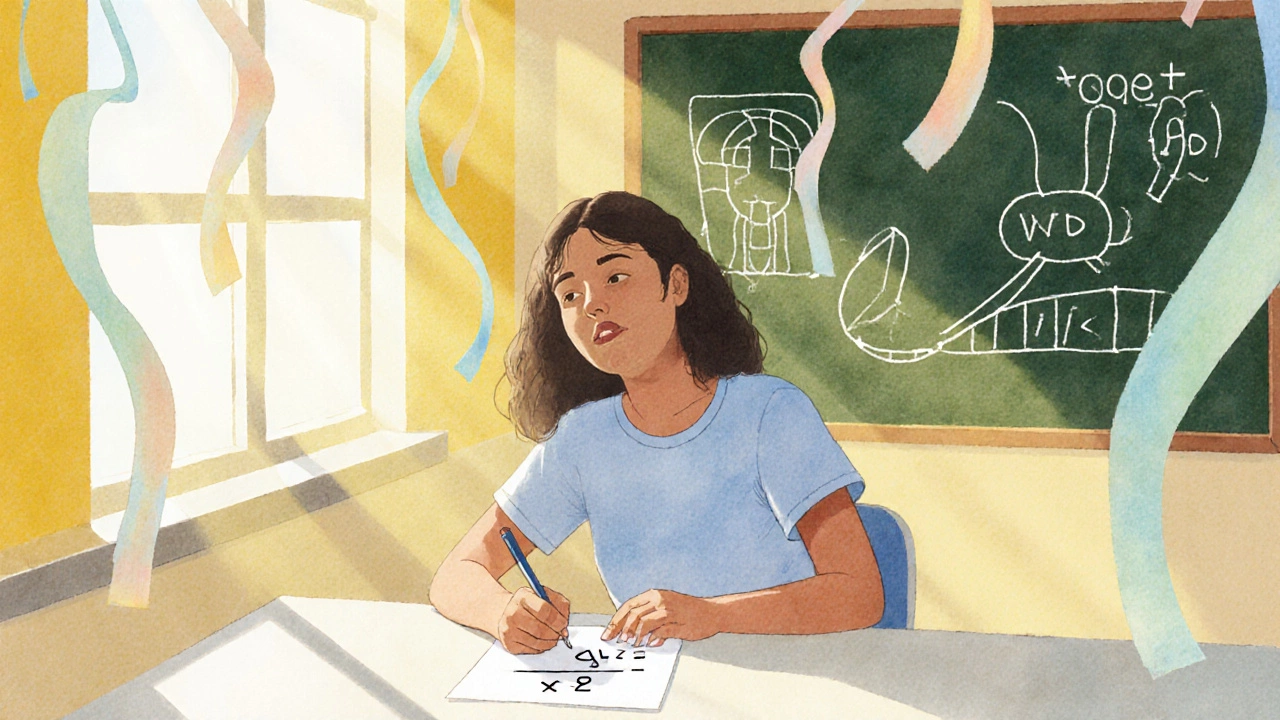Most Feared School Subject: Why Students Dread It and How to Tackle It
Posted on Oct 8, 2025 by Elara Greenfield

Subject Fear Tracker
This tool helps you understand which subjects are most feared by students and how to tackle them effectively.
Mathematics
Fear Percentage: 42%
Perceived Difficulty: 8/10
Typical Triggers: Complex formulas, timed problem-solving
Your Current Fear Level: 5/10
Comparison: Your fear level is moderate compared to typical student fears.
- Chunk learning into small segments
- Use active retrieval practice
- Connect concepts to real-world examples
- Practice mindful breathing before exams
Click below to generate a personalized study checklist based on your selected subject and fear level:
Your Study Plan
- Break into manageable chunks
- Review material using flashcards or quizzes
- Relate concepts to real-life applications
- Practice 60-second breathing exercises before tests
| Subject | Fear % | Difficulty | Triggers |
|---|---|---|---|
| Mathematics | 42% | 8/10 | Complex formulas, timed problem-solving |
| Physics | 35% | 7/10 | Abstract laws, lab reports |
| Chemistry | 30% | 7/10 | Equations, safety protocols |
| English Literature | 28% | 6/10 | Essay structure, thematic analysis |
| History | 22% | 5/10 | Memorisation of dates, cause-effect chains |
What makes a subject the most feared?
feared subject is a school topic that many students avoid because it triggers anxiety and low confidence. From primary classrooms to university lecture halls, you’ll hear the same sigh when teachers mention the word. The fear isn’t random; it’s tied to how we learn, how exams are structured, and even how classrooms are designed.
Why certain subjects turn into the classroom’s boogeyman
Three forces drive the fear factor:
- Abstract concepts that lack real‑world anchors. When a topic feels detached from daily life, the brain resists forming lasting connections.
- High stakes testing. Subjects that dominate final exams become pressure cookers because a single test can decide grades, scholarships, or future pathways.
- Teaching style mismatch. A lecture‑heavy approach works for some learners but leaves visual or kinesthetic students scrambling.
These forces combine differently for each discipline, which explains why the “most feared” label shifts across schools and cultures.
Data snapshot: Which subjects top the fear list?
Recent surveys from education agencies in Australia, the UK, and the US reveal a consistent pattern. About 42% of secondary students rate mathematics as the hardest to approach, followed by physics (35%), chemistry (30%), English literature (28%) and history (22%). The numbers reflect not only perceived difficulty but also how often students report panic before exams.
| Subject | Fear % | Perceived Difficulty (1‑10) | Typical Triggers |
|---|---|---|---|
| Mathematics | 42 | 8 | Complex formulas, timed problem‑solving |
| Physics | 35 | 7 | Abstract laws, lab reports |
| Chemistry | 30 | 7 | Equations, safety protocols |
| English Literature | 28 | 6 | Essay structure, thematic analysis |
| History | 22 | 5 | Memorisation of dates, cause‑effect chains |
How fear shows up in the classroom
When a student confronts a feared subject, the anxiety can manifest in three ways:
- Procrastination - delaying homework until the deadline looms.
- Physical symptoms - sweaty palms, rapid heartbeat during tests.
- Mental blocks - blanking out on concepts that were clear a week earlier.
These reactions aren’t just “bad study habits”; they’re signs of exam anxiety that can erode confidence over time.
Proven tactics to turn fear into mastery
Research from the Journal of Educational Psychology (2023) identifies four evidence‑based strategies that lower fear scores by 15‑25%:
- Chunking: Break a chapter into 10‑minute bite‑size lessons. For example, instead of tackling “quadratic equations” in one go, start with “identifying coefficients,” then “graphical interpretation,” and finally “solving by factoring.”
- Active retrieval: Use flashcards or short quizzes after each chunk. Retrieval practice strengthens neural pathways more than re‑reading.
- Contextual learning: Connect abstract ideas to real‑world scenarios. Show how physics explains roller‑coaster loops, or how chemistry underpins cooking recipes.
- Mindful breathing: A 60‑second box‑breathing routine before a test reduces cortisol spikes, according to a 2022 Stanford study.
Combine these tactics with a personalized study technique checklist and you’ll notice anxiety receding faster than you’d expect.

Real‑world story: From dread to distinction
Take Maya, a Year 11 student from Sydney who dreaded Mathematics all the way through middle school. Her grades hovered at a C‑, and every test felt like a nightmare. After her teacher introduced chunked lessons, weekly retrieval quizzes, and a brief breathing exercise before each exam, Maya’s fear score dropped from 8/10 to 4/10 within a term. By the final exam, she earned a 92%, securing a spot in a competitive engineering program.
Maya’s turnaround illustrates that fear isn’t a fixed trait; it’s a response that can be rewired with the right approach.
Quick takeaways
- Mathematics, physics, and chemistry top the fear rankings, but every subject can become a boogeyman if teaching methods don’t match learner styles.
- Fear shows up as procrastination, physical stress, and mental blocks - all signs of exam anxiety.
- Chunking, active retrieval, contextual learning, and brief mindfulness drills cut fear by up to a quarter.
- Personalised study checklists keep progress visible and confidence high.
- Success stories like Maya prove that fear can be transformed into achievement with consistent, evidence‑based tactics.
Frequently Asked Questions
Why do students fear math more than other subjects?
Math often combines abstract symbols, step‑by‑step procedures, and high‑stakes testing. When students miss a foundational concept, the gaps balloon, making new topics feel impossible. Offering concrete examples, regular low‑pressure practice, and immediate feedback can break this cycle.
Can anxiety‑reduction techniques really improve grades?
Yes. Studies show that brief mindfulness or controlled breathing before exams lowers cortisol, which in turn improves working memory. When combined with active retrieval, students often see a 5‑10% boost in test scores.
What if I’m not a visual learner but the subject is heavily diagram‑based?
Translate diagrams into verbal narratives or physical models. For instance, turn a chemistry reaction chart into a story about atoms meeting at a party. The key is to re‑encode information into a format that matches your learning style.
How often should I use retrieval practice?
Aim for short quizzes every 1‑2 days after covering a chunk. Even five‑minute flashcard sessions reinforce memory far more than a single weekly review.
Is it possible to overcome fear for multiple subjects at once?
Yes, if you apply the same framework-chunk, retrieve, contextualise, breathe-to each subject. Track progress with a simple spreadsheet; seeing fear scores dip across subjects fuels motivation.